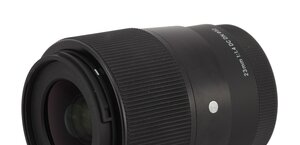Nikon Nikkor Z 85 mm f/1.8 S
1. Introduction
In 1973 the Nikkor 85 mm f/1.8 was released – it also featured multi-coatings and a rubberized manual focus ring. Its optical system was the same as in previous models.
Manual 1.8/85 Nikkor lenses. Photo by. M. Górko. |
Please Support UsIf you enjoy our reviews and articles, and you want us to continue our work please, support our website by donating through PayPal. The funds are going to be used for paying our editorial team, renting servers, and equipping our testing studio; only that way we will be able to continue providing you interesting content for free. |
- - - - - - - - - - - - - - - - - - - - - - - - - - - - - - - - - - - - - - - - - - - - - - - -
In autumn 1994 the AF-Nikkor 85mm f/1.8D was lauched, a lens that lasted out untill the digital era as its successor was announced only in 2012 in the shape of the Nikkor AF-S 85 mm f/1.8G. The new model featured not only ultrasonic autofocus motor SWM but also a completely new, more optically complex design consisting of 9 elements positioned in 9 groups.
If anybody thought 9 elements in the 1.8/85 model without stabilization were a lot, they had to correct themselves in July 2019 when a new, mirrorless Nikon system was supplemented by the Nikkor Z 85 mm f/1.8 S – that lens was composed of as many as 12 elements. We were very curious how the design influenced its optical properties so we ordered one specimen for our tests and were looking forward to seeing results.
We've been lent lenses for our testing procedures courtesy of the Nikoncompany – thank you very much!
You are also invited to get acquainted with our test procedure, described in the article "How do we test lenses?" If you feel it’s still not enough, please go to our FAQ section where you can find some further explanation.
 |
 |







